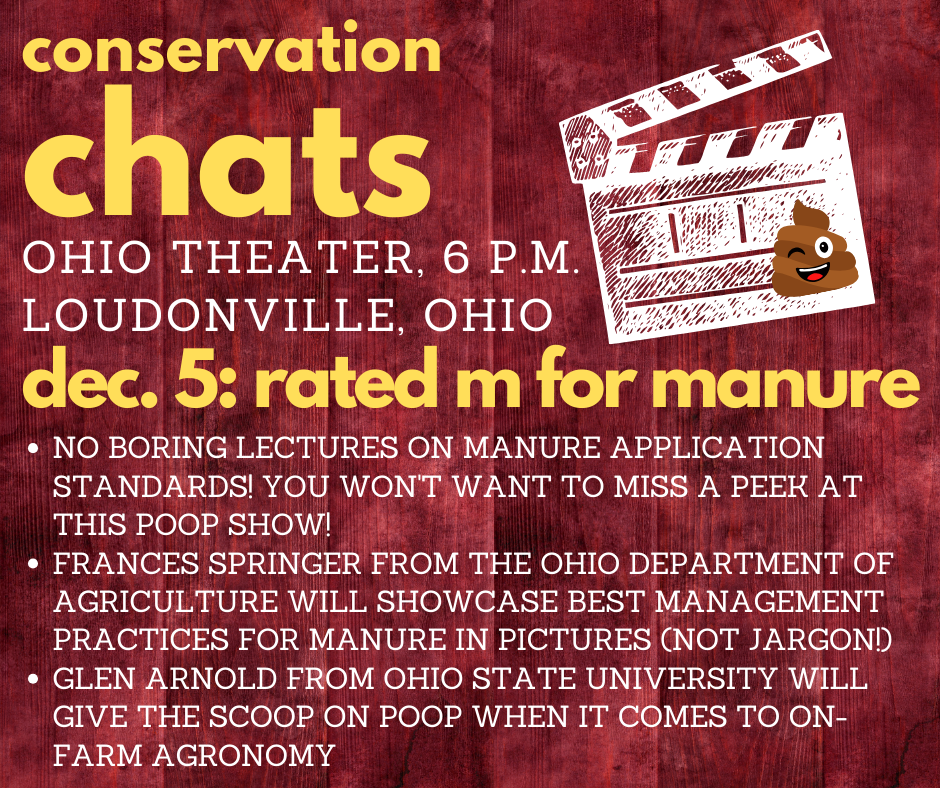Snowy weather & freezing temps mean a no-go for manure applications
Winter is coming and it will be so exciting to see the sparkle of the snow as it covers the rolling hills of northeast Ohio. The sun shining on a fresh lay of snow is just unexplainable and it sure makes my commute to work a whole lot better. But the beauty comes to a screeching halt when I pass the once pristine, sparkling snow-covered field that is now covered with manure.
Manure on farm fields and as a nutrient source is very beneficial, when applied properly using best management practices. Manure application is nature’s ultimate recycling project. Proper manure application makes good sense for the environment and for your bottom line. But the key is that manure applications must be done correctly.
At Ashland SWCD, we never recommend applying manure to frozen or snow-covered ground. Manure applications in the winter should not be a planned part of your operation. With farmers increasingly under the spotlight when it comes to water quality and environmental stewardship, you owe it to yourself and the rest of our industry to take responsibility and plan for proper manure applications. Plus, proper manure application is the law, and there can be serious consequences if you choose not to follow those practices.
However, as fellow farmers and agriculturists, we also know that the reality is that sometimes “crap” happens on the farm and emergency application may be necessary to prevent storage overflow. If that happens, it’s important to remember to only spread enough manure to prevent manure overflow until soil conditions improve.
During an emergency winter application, it’s important to follow these guidelines:
Manure must be injected or immediately incorporated & cannot exceed 5,000 gallons/acre.
Land must have at least 90 percent surface residue; that most likely means cover crop ground or forage fields.
Apply to least risky fields with the least slope. Fields with over a 6 percent slope (that’s a lot of northeast Ohio) must be applied in alternating 60-200 feet strips on the contour.
Manure cannot be applied on more than 20 contiguous acres.
Application must be setback to a minimum of 200 feet from all surface water & 300 feet from all wells, springs and drinking water.
Application rates cannot exceed those specified in Table 3, page 16 of the NRCS Conservation Standard Code 590, Nutrient Management.
While it’s important to follow these guidelines, they are not a “Get out of jail free” card. Even if you are following these guidelines and your manure application enters waters of the state (ditches, streams, rivers, etc.) you are still ultimately responsible and may face financial fines. Also, remember to keep all manure application records for 5 years.
If all of this is overwhelming or more information would be of interest. Ashland SWCD, Muskingum Watershed Conservancy District (MWCD) and surrounding local SWCD are going be hosting “Rated M for Manure” at the Loudonville Ohio Theatre. This event will feature Glen Arnold from The Ohio State University, he will be giving the scoop on poop with on the farm agronomics. Francis Springer from the Ohio Department of Agriculture will show best management practices in pictures for a good, bad, and ugly representation of best management practices that may or may not have been used.
The doors will open at 5:30 with the program starting at 6. Pizza and water will be supplied, but if you want popcorn, candy, or other drinks they will be available for purchase at the concession stand. We do ask that you RSVP to Ashland SWCD at 419-281-7645 to ensure seating and pizza for all attendees.

